25 March 2020
Speciality Drinks presents 'Bring the Bar Home'
A few weeks ago, the idea of not being able to visit a favourite bar (or any bar for that matter!) whenever you wanted was unthinkable for most consumers...
Read more17 November 2023
PeopleJoin us to meet the makers of one of Brazil's finest cachaça, in which we meet with the founder of Yaguara, Hamilton Lowe
Yaguara cachaça launched in Brazil long before it made its international debut. For co-founder Hamilton Lowe and his colleagues, it was important to engage with the local culture before venturing into the wider world. Just as well, because the rise of Yaguara – and other new wave cachaças – has coincided with a reappraisal of traditional Brazilian crafts at home. “Across the board we’re starting to see the younger generation recognising that Brazil can make premium products,” Lowe explains. “Gins, chocolates, all sorts of things that Brazil produces internally, people of 20-30-years-old are taking real pride in these things. They don’t automatically feel like everything external is automatically cooler, and that includes spirits.
Cachaça has been made in Brazil in some form since the 16th century, so it’s probably about time it got a reappraisal. More than 500 million litres of Brazil’s national drink are consumed domestically each year, but Lowe estimates that as much as 85% of that is mass produced to be sold cheaply. All cachaça consists of sugarcane juice, fermented and distilled, but from that starting point comes spirits of remarkably varied character and quality.
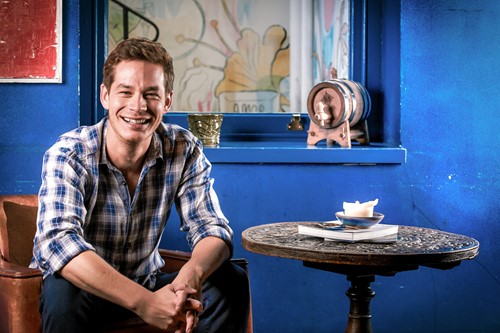
“Artisanal pot still cachaça, of which Yaguara is one, is the smaller part of the market but it’s been growing,” says Lowe. “Then you’ve got the industrial cachaças which became popular in the in the 80s and the 90s. They’re column distilled and what they produce is very different in terms of style and quality because they get up to such a high ABV. If you distil up to maybe 95% ABV and then bring it down with water, you’re going to get that higher, more aggressive ethanolic taste, which I think is apparent in the liquid. Whereas in the craft section, you’re taking a cut and selecting the heart of the spirit.”
Yaguara cachaça – named for the indigenous Tupi-Guarani word from which we derive the English spelling ‘jaguar’ – was born out of discussions between Lowe and a school friend who just happened to be heir to five generations of cachaça making. With some additional help from famed blender Erwin Weimann – known in Brazil as the Pope of cachaça – this artisanal brand began to take shape.
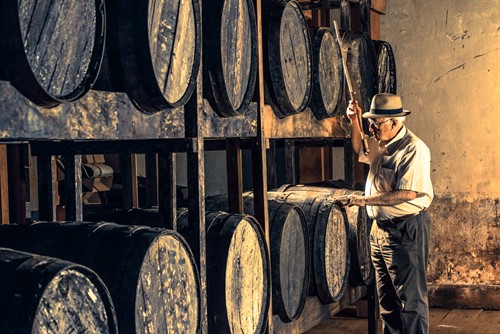
“[Weimann] was a professor of cachaça for 30 years, he taught distillation in universities. A lot of the people who are now the master distillers at other big cachaça brands are his apprentices. So with his help we went and looked around for distilleries, which is where came across this fantastic distillery in the South of Brazil, expertly run by the Meneghel family.”
At the home of Yaguara, in the southerly state of Rio Grande do Sul, they don’t use towering columns or other concessions to efficiency. Weber Haus distillery was founded by German migrants to Brazil in the early-19th century, who brought their experience with European spirits to bear in South America. “The great grandfathers of the distillers there were schnapps producers back in the 1850s,” Lowe explains. “There’s no shortage of different fruits there, but I don’t think they would have been using peaches.” That distilling heritage has helped to inform the style of Yaguara, which begins with fresh sugarcane, cut by hand and brought quickly to the distillery to maintain freshness.
“We distil nine months of the year, with three months off. We use three varieties of sugar cane, all the same strain, but they grow at different speeds which allows for three harvests throughout the year.” While reduced cane syrup or molasses are much more stable than raw cane juice, that sense of freshness is key to the identity of Yaguara. “It’s always fresh juice, always hand cut, and because we’ve got organic fields we use biofuel tractors – we don’t use any diesel or anything like that. Sometimes to get into some parts of the field, because it’s organic and it’s not all beautifully laid out, you actually need a horse and cart where the tractor can’t reach.”
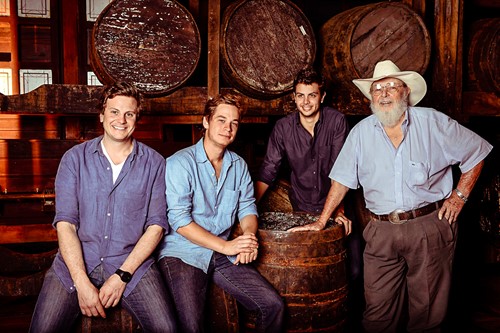
Fermentation is short and controlled running for about 24 hours, all the better for maintaining the character of the cane. “The yeast is a strain we catch in the sugar cane itself and in the fields, that we then propagate in a laboratory for consistency. Our theory is that because there’s so little space to affect the flavour, with no added sugars and so on, the fermentation has to be really good. Consistency is more important than getting funky spikes from wild fermentation.”
The fermented cane juice is then distilled, only once, in small 750 litre pot stills. “The cut starts at 54% ABV, but you’re not allowed to bottle higher than 48%, so there’s very little room to hide.” It’s permissible in making cachaça to add up to six grams of sugar per litre. This is positively dry in the wider word of cane spirits where it’s not difficult to find rums with ‘dosage’ in excess of 30g per litre. Regulations also dictate that if producers choose to add other flavourings – honey or caramel, let’s say – then they’re required to declare it on the front of the bottle. With Yaguara, no such additions are made.
“We blend a five-or-six-year old oak cask into the cachaça to soften it a little bit and make it more versatile.” In addition to the familiar white oak casks common in distilleries from Kentucky to Kyoto, producers of cachaça have access to an incredible range of different types of wood in which they can age their spirits.
“The tricky part of Brazil, in a cachaça sense, is that it’s so big and there are so many different places to see these different woods. When you go to the north, they’re going to use more Amazonian style woods which are so funky and strong with very tight fibres that age one way and then you go down to the coast and you more Atlantic woods which are rich and mineral and so impart different flavours.”
However, as Lowe is keen to point out, cask ageing requires a steady hand so as not to overwhelm the inherent character of the spirit. “We feel that the beauty of cachaça is in its freshness. Cachaça has 27 different woods you can age in. But we work with younger aged versions which retain the freshness of the liquid as well as imparting a bit of that domestic flavour that don’t get from oak. You can put it in Amburana, for instance, but I wouldn’t leave it in there for more than a year, tops. It’s just too strong and too powerful.” While these indigenous Brazilian casks will play a part in future Yaguara releases, particularly limited-editions, Lowe and his team remain committed to showcasing the fresh character of the raw materials and the craftsmanship of the master blender.
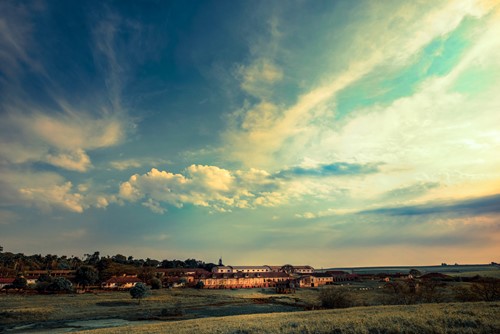
After blending and filtration, Yaguara emerges a nicely textural spirit with notes of lemongrass, chamomile and spicy raw sugarcane. The brightness of those fresh cane notes, coupled with the nuance achieved through blending, mean that it shines in a number of different serves. There’s the caipirinha of course, a close relative of the Ti Punch and the Mojito, which pairs cachaça with ice, lime and a little sugar.
The popularity of this drink has helped to introduce Brazil’s national spirit to the world, but it’s not the only option when it comes to serving cachaça. “I love it in a Daiquiri, it’s really green and full. But really, it’s a very flexible liquid. I’ve seen it going into rum cocktails, into gin cocktails, into sours. In terms of how to use it, definitely think rum or gin or rum. But also, I’d say just taste it, feel it, think about what it can add.”
“We did very well with a highball that was 1:2 with maté tea. You know maté’s a massive thing in Brazil.” Caffeine-rich maté, made from the yerba mate plant, has been a part of life in South America for centuries. This simple highball is a great example of the way the culture and history of Brazil are inspiring new ways to drink cachaça. “The other drink which has got a lovely story is the Rabo de Gallo. When Cinzano used to have a factory in Brazil they put together this cocktail which was basically vermouth and cachaça and they called it Rabo do Galo, ‘tail of the cock’. And people have started really getting into it and now all the cachaça brands list it as the next Brazilian classic. It is a boozier drink and is a bartenders drink and the industry really got behind it.”
Drinks like the Rabo do Galo – a Negroni-ish number with sweet vermouth and Cynar – offer a fantastic way for bartenders to introduce cachaça to new audiences. As with other cane spirits, this introduction does come with the challenge of explaining that not all cachaça is created equal, and that paying a little more for a premium product is well worth doing. But with brands like Yaguara gaining prominence in bars around the world, and the popularity of craft cachaça in Brazil only increasing, it seems ever more likely that cocktail lovers can be convinced to make their next rum cocktail a cachaça.
Yaguara was the headline brand at our September Speciality Session, selected as an example of fantastic, traditional and organic cachaça.
You’ll find Yaguara available at traditional 41.5% abv and also at Still Strength (48%) through Speciality Drinks.
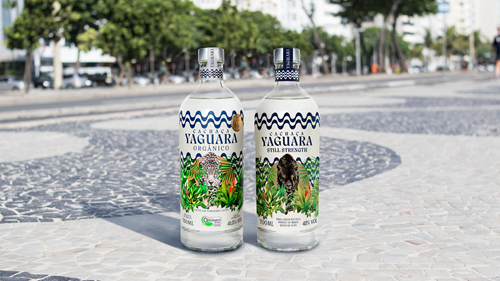
25 March 2020
A few weeks ago, the idea of not being able to visit a favourite bar (or any bar for that matter!) whenever you wanted was unthinkable for most consumers...
Read more15 April 2020
Due to the current Covid-19 pandemic the Drinks Trust has faced unprecedented levels of demand for assistance, and is working hard to support those in need.
Read more03 April 2020
To help ensure that drinks industry professionals working from home are as productive as we can be...
Read moreThank you for signing up to our trade newsletter! We look forward to sharing all the latest industry news, trends, events and products with you! You can unsubscribe from this newsletter at any time by emailing us at [email protected]